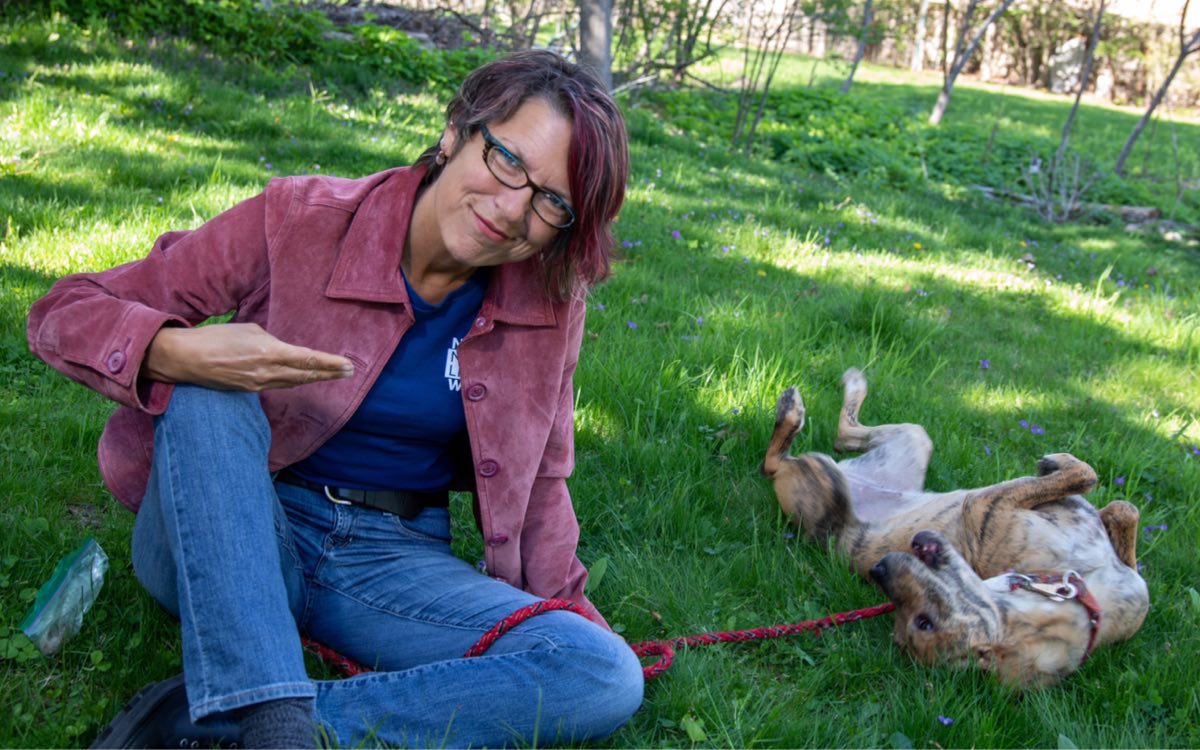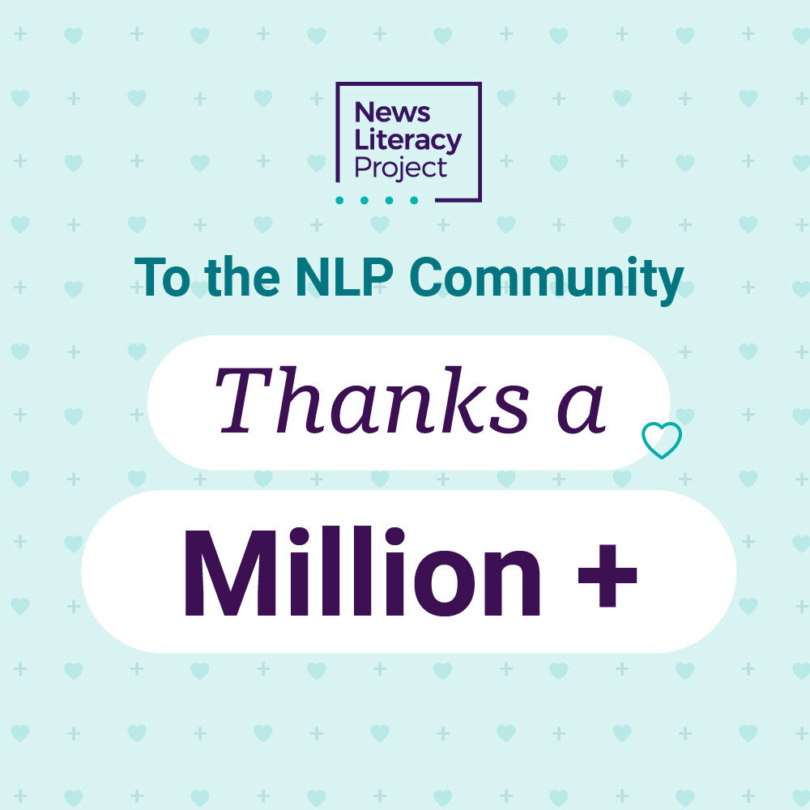
NLPeople: Miriam Romais, senior manager, educator engagement
This is part of a series that introduces you to the people of NLP.
Miriam Romais
Saratoga Springs, New York
This is part of a series that introduces you to the people behind the scenes at the News Literacy Project.
1. Can you tell us a little about your background and what brought you to NLP?
My background is in documentary photography. I was given a camera in high school, and visual storytelling has been my focus ever since. After college, I freelanced as a photojournalist for local papers in New Jersey but soon realized it didn’t completely match my interests. I wanted to spend more time with the people I was photographing and dive into stories that went far beyond the assignment. I wanted to see and learn more than just that single narrative, as we are all multi-layered, complex beings. Although I am first-generation estadosunidense, I credit that curiosity to growing up in Brazil (where my family is from), as it deeply influenced how I see and experience life — how we position ourselves and navigate the world among classes, races, cultures and experiences. Seeing a lack of representation in images we consume is also what led me to become a photo editor/publisher, director and a curator at En Foco, a nonprofit that supports photographers of African, Asian, Latino, Native American and Pacific Islander heritage. My own photographic work focuses on creating images that convey the dignity of the person on the other side of the camera, and I see that as a collaborative partnership. I had recently finished my MBA with a concentration in global brand marketing and was exploring ways to bring this knowledge into the nonprofit world when I saw a listing posted by a photojournalist I knew who was then working at NLP. The more I learned about the organization, the more interested I became. And with the encouragement of friend and journalist David Gonzalez of the New York Times, who was a volunteer in NLP’s Newsroom to Classroom program in its early days, I took the plunge.
2. How has working for NLP impacted your life or changed your world perspective?
Reading and interpreting images has allowed me to apply a photo-focus to how I look at various other media. I’ve always been an obsessive note taker, making sure I have the info I need for photo captions. When I heard Nicole Frugé of the San Francisco Chronicle say in a NewsLitCamp a few years ago that “photojournalism IS journalism” — and discuss the importance of captions — I felt seen and validated. Photojournalists are more than picture-makers; they are an integral part in the story being conveyed. My pet peeve is hearing someone say “a photo is worth a thousand words” because it’s really a thousand different and sometimes conflicting words as we all see the world via our own lens and experience. And working at NLP has also made me acutely aware of the depth and reach of misinformation affecting so many more people I am close to than I ever thought.
3. How has your work as a photographer and your efforts supporting photographers of color influenced your work at NLP?
En Foco, where I worked for over 20 years, was a space for photographers of color to thrive. It was led by photographers of color, nurturing and providing opportunities that are challenging to find in the mainstream media or art world. Journalism is rife with stories “about” people of color, but often not told by them. We advocated for voices that ensured a pluralism in the field of photography. To me, the carryover to NLP is similar yet just as urgent. We have seen the consequences of inaccurately portraying or stating something or not standing up to wrongdoings, so helping others explore the information they consume — whether written or visual — is incredibly satisfying. I recall explaining what NLP does to a close friend when I first joined, and she exclaimed, “It’s like you joined the X-men in the fight against misinformation!” I still love that.
4. What is the most surprising thing you have learned or experienced since joining NLP?
The most surprising thing to me, is the prevalence of well-meaning people accidentally amplifying misinformation, or choosing to do nothing when they see it online or hear others echoing information without thinking about it first. Wasn’t that called gossip in the before-times? Most people don’t take the time to question information or consider its origin, which heightens this malaise of misinformation. I remember seeing an article saying that falsehoods are 70% more likely to be retweeted than the truth and reach their first 1,500 people six times faster because we are distracted or feeling lazy. Those are eye-opening numbers, so I’ve been learning how to thoughtfully engage in such conversations.
5. What news literacy tip, tool or guidance do you most often use?
Lateral reading. You might think it should be reverse image search, but as a photographer, I find it way easier to spot manipulated images than to know all the details surrounding a particular context or story. I love learning new things, and drilling down to find varied and reliable sources has been an essential part of that.
6. What is the first thing you will do as we fully emerge from the COVID-19 pandemic?
Have multiple parties with those I most cherish and hug them every two minutes, maybe more. It would be outdoors with solar lights and papel picado strung throughout the trees, candles and firepit blazing, songs and laughter (and tears for those we’ve lost), and loads of yummy Brazilian food.
7. Aside from fighting for facts, what else are you passionate about?
In no particular order: good photography, martial arts (I am a black belt in Taekwondo), scuba diving, motorcycle safety (I am a former national trainer and current RiderCoach for MSF-usa.org.), travel, the environment, especially reducing my plastic consumption, and people in all their complicated splendor.

8. Are you on team dog, team cat, team wombat? Or do you prefer stuffed animals to pets?
Team dog! We fell in love with Reign since the first photo our NLP colleague Eryn posted on Slack. She was fostering the pup, who was found as a stray in West Virginia. We drove down to D.C. to meet her and drove home together that same weekend. She has kept us on our toes ever since and spends most of her time flopping on the floor asking for belly rubs in between trying to tree squirrels.
9. What one item do you always have in your refrigerator?
Bacon and farm fresh eggs at the ready, although we don’t keep those in the fridge.
10. What’s in your pocket/backpack/laptop case right now?
I haven’t had to carry it around for so long, I had to go look! Magenta stickie note pad, my favorite mechanical pencil, extra battery pack (for when my camera with the ring-tone runs low on power), and dark chocolate (OK, that might be a bit stale by now…)
